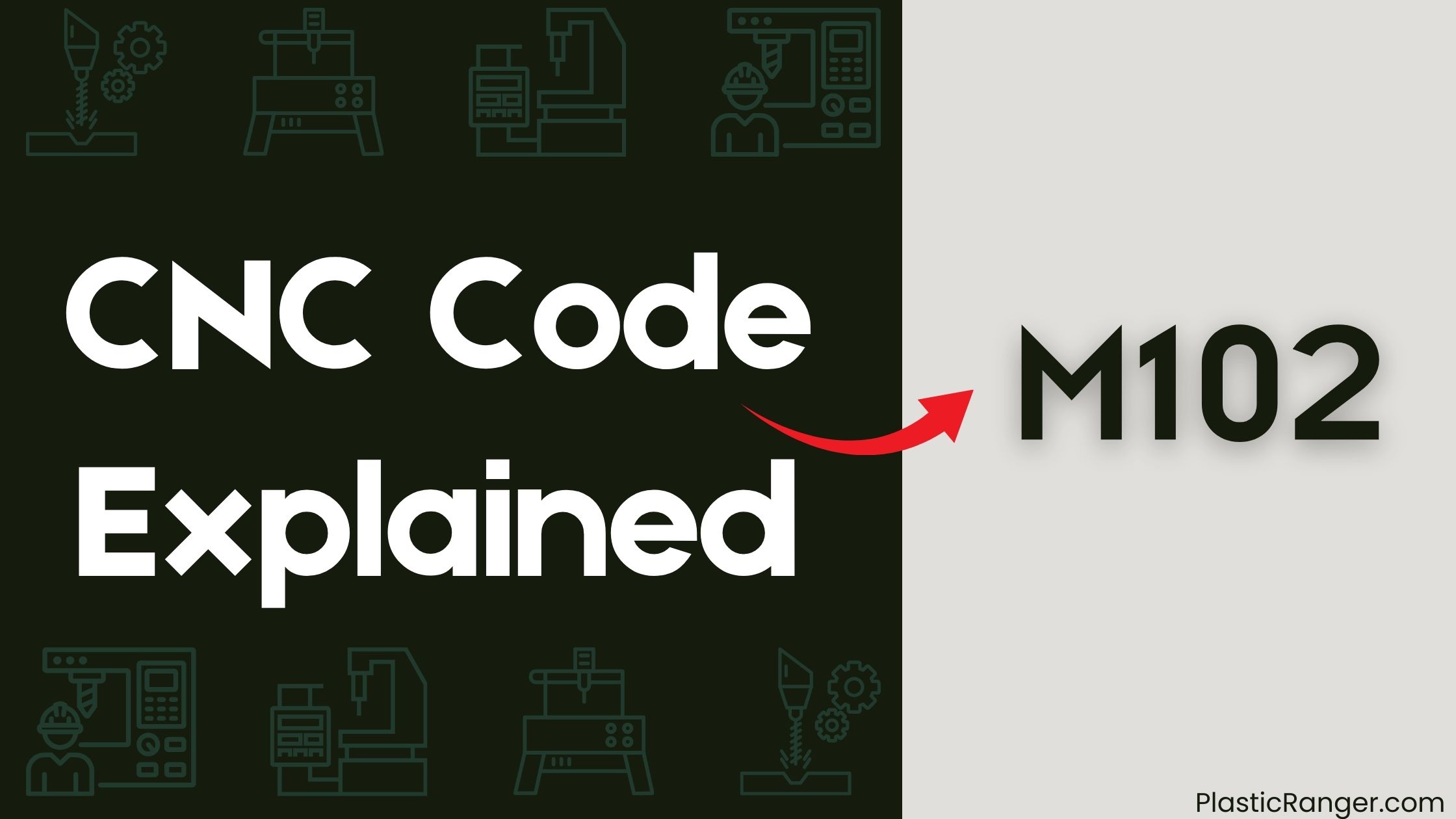Welcome to our simple guide on the M102 CNC code. Whether you are new to CNC programming or an experienced machinist, understanding the M102 code is essential.
This guide will explain everything you need to know about this unit mode command—what it is, when to use it, and why it matters.
(Step-by-step.)

What is the M102 CNC Code?
The M102 command is used to deactivate the probe function on a CNC machine. Probes are vital tools for measuring and locating parts on the machine bed, ensuring accuracy in machining operations. However, there are times when the probe needs to be deactivated—for instance, after completing its measurements or before transitioning to other machining tasks.
Key Function of M102
- Deactivation of Probe: Ensures the probe stops operating to prevent interference with subsequent machine tasks.
- Safe Transition: Reduces the risk of errors caused by accidental probe activation during machining.
When and Why Use M102?
Understanding when and why to use M102 can prevent errors and ensure smooth operations. Here are common scenarios where this G code is essential:
- Post-Probing Processes
After using the probe to measure part dimensions or locate edges, M102 is used to disable the probe. This avoids unnecessary movements and potential damage. - Transition to Cutting Operations
Deactivating the probe before starting cutting tasks ensures it doesn’t interfere with the tooling process. - Machine Safety
In case of software or hardware bugs, disabling the probe manually using M102 can act as a fail-safe.
How to Use the M102 Code
Basic Syntax
The M102 command is straightforward. It is typically used as a standalone line in the CNC program:
M102;
Example Program with M102
Here’s a simple program illustrating M102 usage:
| G-Code | Description |
|---|---|
| G21 | Set units to millimeters |
| G90 | Absolute positioning |
| G0 X0 Y0 Z5 | Move to safe position above the part |
| M101 | Activate probe |
| G38.2 Z-10 | Probe to find the part surface |
| M102 | Deactivate probe |
| G0 Z5 | Move back to safe position |
In this example
- M101 activates the probe.
- The G38.2 command moves the probe for surface detection.
- M102 deactivates the probe once its job is complete.
Important Notes
- Ensure the probe is deactivated before starting other tasks to avoid errors.
- Check your CNC machine’s manual, as some controllers may have unique requirements or limitations for M102 usage.
Troubleshooting Common Issues
Even with its simplicity, you might encounter problems when using M102. Here’s how to address common issues:
- Probe Doesn’t Deactivate
- Verify if the M102 command is correctly placed in your program.
- Check for compatibility issues with your CNC controller.
- Unexpected Machine Behavior After M102
- Ensure the probe was properly activated before deactivating it.
- Review the program for overlapping commands that may interfere.
- Controller-Specific Variations
- Refer to your machine’s documentation to confirm how M102 behaves. Some machines might require additional parameters or sequences.
Advanced Tips for Using M102
- Combine with Macros: Create custom macros for automated probing and deactivation to simplify programming.
- Simulate Before Execution: Use simulation software to validate your program and ensure M102 works as expected.
- Integrate with Tool Changes: Include M102 before tool change commands to avoid conflicts between probe and tooling operations.
Best Practices for Managing Probes in CNC Programming
- Organized Code
Always structure your code clearly, placing M102 immediately after probing operations. - Dataset for Research:
- Record probing data, including positions, dimensions, and any anomalies.
- Use the dataset to analyze patterns or refine programming strategies.
- Documentation
Maintain detailed documentation of your probing operations, including where and why M102 was used. - Error Logs
Keep track of errors related to probe activation/deactivation for continuous improvement.
Mastering the M102 CNC code is essential for safe and efficient machine operation. This command ensures the probe function is deactivated after use, allowing seamless transitions between tasks. By understanding its purpose, syntax, and best practices, you can prevent errors, enhance precision, and streamline your CNC programming workflows.
Remember, whether you’re a beginner or an experienced programmer, continual learning and experimentation are key to mastering CNC operations. With this guide, you’re well-equipped to start using M102 confidently.
Let us know how M102 has improved your CNC programming journey! Share your experiences or questions below.
CNC Codes Similar to M102
Code | Mode/Description |
|---|---|
| M101 | MOM (minimum oil machining) canned cycle mode (I) |
| M103 | Turn extruder off. |
| M104 | Set extruder temperature |
| M105 | Report Temperatures |
| M106 | Set Fan Speed |
| M107 | Turn fan off |
Quick Navigation
